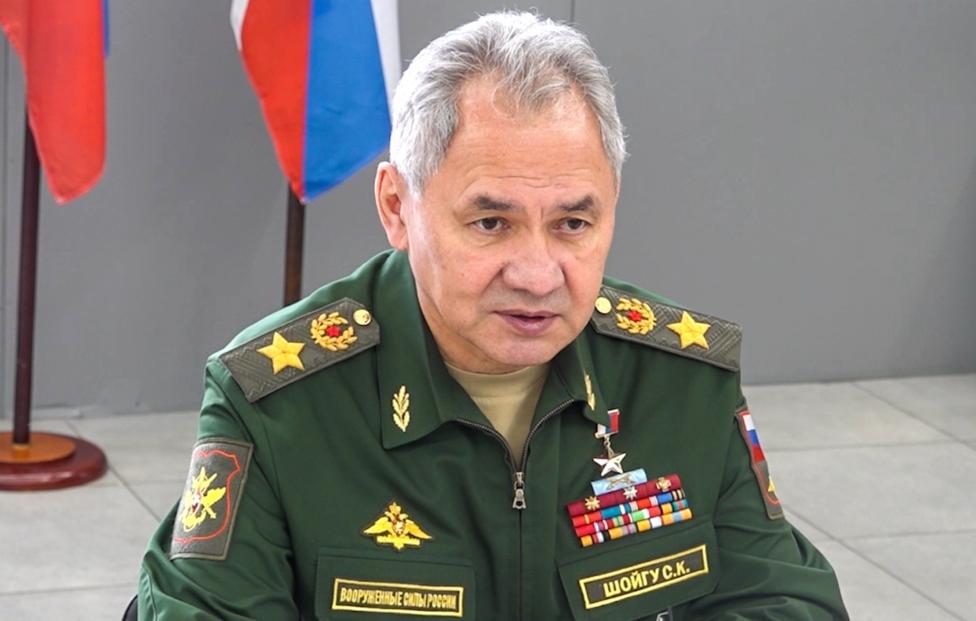The Armed Forces of Ukraine (AFU) have lost almost 500 thousand people since the beginning of a special military operation, Russian Defense Minister Sergei Shoigu said at a meeting of the department's board.
The minister promised to increase the intensity of attacks on logistics centers and storage bases of Western weapons on Ukrainian territory, spoke skeptically about the new package of American assistance to Kiev and announced the arrival of the latest S-500 anti-aircraft missile systems to the troops.
TASS has collected the main theses of Shoigu.
About the course of the special military operation
The Russian military has recently liberated Pervomaiske, Bogdanovka and Novomikhailovka in the DPR, and there is an "expansion of the control zone" in Berdych and Georgievka. "Our high combat potential allows us to constantly exert fire influence on the enemy, preventing him from holding the line of defense."
"In total, since the beginning of the special military operation, the losses of the Armed Forces of Ukraine amounted to almost half a million soldiers."
"We will increase the intensity of attacks on logistics centers and storage bases of Western weapons. The Russian Armed Forces will continue to solve the tasks set until the goals of the special operation are fully achieved."
About American aid to Kiev
Washington intends to allocate almost $61 billion to Kiev to prevent the "collapse of the Armed Forces of Ukraine," but "most of the allocations will go to finance the military-industrial complex of the United States": "The American authorities cynically declare that Ukrainians will die for their interests in the fight against Russia."
About the Russian "defense industry"
Enterprises of the Russian military-industrial complex have significantly increased their capacities and significantly increased the combat capabilities of the army: "This is evidenced by the situation in the zone of a special military operation."
Russia will continue to increase the production of the most in-demand weapons and military equipment "in proportion to the threats posed by the United States and its allies."
On air and missile defense
Since the beginning of the special operation, the Russian military has destroyed over 22 thousand Ukrainian drones, about 6 thousand rockets and about 2 thousand other air targets, including 862 aircraft and helicopters and 956 missiles of various types, including anti-aircraft.
The authorities of Moscow and the Moscow region, the Belgorod and Leningrad regions, and the Krasnodar Territory make a significant contribution to improving the effectiveness of Russian air defense: "With their support, units to combat unmanned aerial vehicles are being formed, positions for anti-aircraft missile and radio engineering troops are being equipped."
Equipping troops with advanced weapons remains one of the priorities of the Aerospace Forces. In 2024, the military will receive the first samples of the S-500 in two versions - long-range anti-aircraft missile systems and missile defense systems, as well as the S-400, S-300V4, Buk-M3 and Tor-M2U complexes. Deliveries of Pantsir missile and cannon complexes will almost double in 2024. "To date, the share of modern samples is 82%, in the next two years this figure should be increased to 85%."
About the Leningrad and Moscow military districts
The recreated military districts will receive a total of about 9.4 thousand units of weapons and military equipment, most of them - over 7 thousand - will go to the Leningrad District.
The 44th Army Corps has already been formed in its composition. Three motorized rifle brigades will be reorganized into divisions.
On the elimination of the consequences of floods
Since March, the military has been participating in flood control measures in Bashkiria and Buryatia, the Trans-Baikal and Khabarovsk Territories, the Ulyanovsk and Chelyabinsk regions. "Work continues to stabilize the flood situation in the Orenburg and Tyumen regions and eliminate the consequences of the flooding of the Ural and Ishim rivers."
About NATO
Sweden's accession to the North Atlantic Alliance has increased tensions in the western and northwestern strategic directions, and the organization is also trying to increase activity in the Arctic.
The grouping of NATO reinforcement troops near the Russian borders numbers up to 33 thousand people, about 300 tanks and more than 800 other armored combat vehicles.
"Such actions by Western countries force us to apply adequate response measures."

